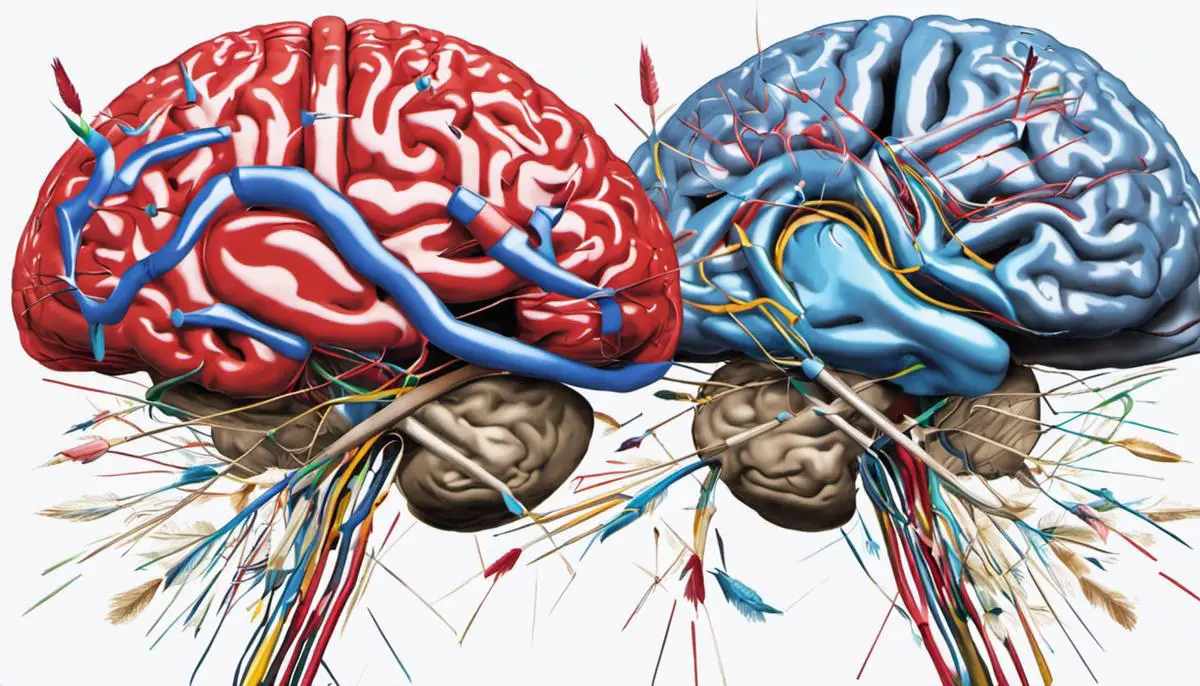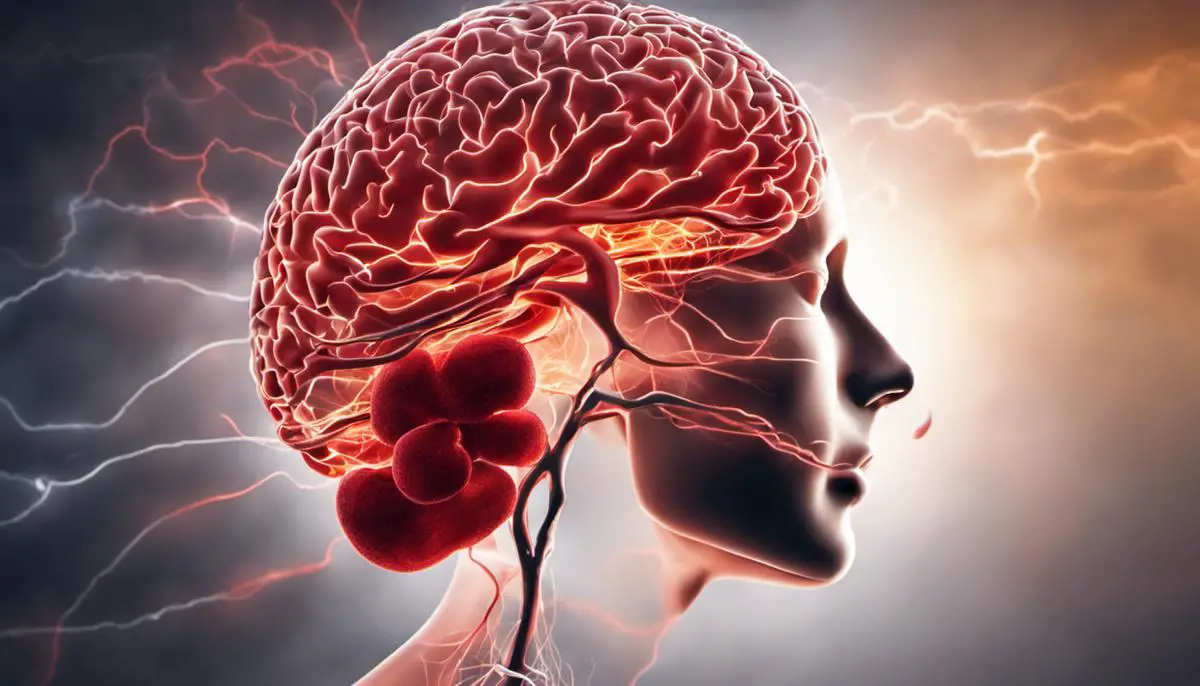In our contemporary culture, there’s no denying the growing prominence of stroke as one of the deadliest diseases affecting humanity. Knowledge about stroke, particularly its origin, impacts, and contributing factors is crucial, particularly as a sedentary lifestyle has been identified as a significant contributor. This vital understanding unfolds the importance of maintaining a preventive approach, with regular exercise acting as a potent ally. The subsequent benefits of exercise, not only for stroke prevention but also for the overarching aspect of cardiovascular health, are highlighted and explored with the aim of educating the general public. Furthermore, the importance of selecting the fitting types of exercises and consistent involvement in physical activities is underscored to highlight how these elements can contribute to lowering the risks associated with high blood pressure, obesity, and undue stress — all key drivers of stroke.
Understanding Stroke
Understanding Stroke: A Comprehensive Overview
A stroke, also termed a cerebrovascular accident, can be defined as a critical medical condition that occurs when the blood supply to the brain is diminished or interrupted. This often happens due to either blockage or rupture of blood vessels, depriving brain cells of oxygen and nutritions, leading to necrosis or cell death. The loss of brain cells depends on the exact location and magnitude of the insult, and it could potentially result in varying degrees of physical and cognitive impairment or sometimes death.
Sources and Triggers
There are three primary types of stroke: ischemic, hemorrhagic, and transient ischemic attack (TIA). Ischemic strokes make up 87% of all cases and are the result of a blockage in the artery which supplies blood to the brain. Hemorrhagic strokes account for approximately 13% of stroke cases and are caused by arteries in the brain either leaking or bursting open. TIA, also known as a mini-stroke, doesn’t cause permanent damage but is considered a major warning sign that a more severe stroke may be imminent.
Both genetic factors and lifestyle choices contribute to the risk of stroke. High blood pressure, a history of heart disease, diabetes, high cholesterol, smoking, and obesity all increase the chances of having a stroke.
Effects on the Body
The brain is a complex organ that controls a multitude of functions in the body, ranging from movement and sensation to emotion and cognition. Depending on the area of the brain affected by the lack of oxygen, stroke can result in a range of symptoms and impacts. These could include paralysis, problems with thinking or memory, emotional challenges, or difficulties in speaking or swallowing.
Physical Inactivity and Stroke Risk
Leading an inactive physical lifestyle can greatly increase your risk of stroke and other cardiovascular diseases. Sedentary behavior tends to cause the development of obesity, high blood pressure, and high cholesterol, all significant factors that can contribute to stroke. Regular physical activity, on the other hand, can help control weight, reduce hypertension, lower the level of cholesterol, and enhance overall vascular health.
Studies suggest that engaging in moderate to vigorous physical activity, such as aerobic exercise, can help reduce stroke risk. This could include activities such as brisk walking, swimming, or cycling, ideally for at least 150 minutes per week for moderate activity and 75 minutes for vigorous activity.
Incorporating simple exercises into daily life, like taking stairs instead of elevators, parking farther away from entrances, or conducting standing or walking meetings, can also contribute to enhancing physical activity levels and hence help in stroke prevention.
To sum up
Understanding stroke, its causes, consequences, and the benefits of leading an active lifestyle can play a critical role in preventing this life-threatening condition. Always bear in mind that maintaining a healthy lifestyle goes a long way in safeguarding your health and well-being.

Benefits of Exercise for Stroke Prevention
Understanding Stroke and Exercise
A stroke occurs when the blood supply to a part of your brain is interrupted, preventing brain tissues from getting the oxygen and nutrients they need. Exercise plays a significant role in stroke prevention; studies show it has an effect on several stroke risk factors, including high blood pressure, weight control, and stress management.
Importance of Exercise for Reducing High Blood Pressure
High blood pressure, or hypertension, is a primary risk factor for stroke. Exercise helps to lower high blood pressure by improving your heart’s efficiency, meaning it needs less effort to pump blood. This reduction in heart strain subsequently lowers your blood pressure. Regular exercise also strengthens your heart muscle and improves overall cardiovascular fitness, which indirectly helps reduce hypertension.
Role of Exercise in Weight Control
Obesity is another stroke risk factor that can be managed with regular exercise. When combined with a balanced diet, exercise is an effective strategy for achieving and maintaining a healthy weight. Exercise reduces fat deposits in the body, particularly around the abdomen, a factor linked to stroke risk. Additionally, regular physical activity will boost metabolic rate and promote muscle growth, both of which significantly contribute to weight loss.
Exercise for Stress Management
Stress can indirectly contribute to the risk of stroke, primarily by worsening other stroke risk factors like high blood pressure. Exercise has been found to help manage stress levels, reduce anxiety, improve mood, and promote better sleep. Physical activity stimulates various brain chemicals that can leave you feeling happier, more relaxed, and less anxious.
Recommended Exercise Regimen
Ideally, adults should aim for at least 150 minutes of moderate-intensity or 75 minutes of high-intensity physical activity every week. This exercise program could be daily walks, jogs, swims, biking, or participating in aerobic classes. Balance exercises and muscle-strengthening activities are also recommended twice a week. It is crucial to build up your activity level gradually if you are not used to regular exercise.
Conclusion
In conclusion, regular exercise plays a comprehensive role in stroke prevention. It helps control weight, reduce high blood pressure, and manage stress levels, all of which are vital stroke risk factors. Therefore, incorporating a regular exercise regimen into your lifestyle is one of the most effective ways to protect against the risk of a stroke.

Choosing the Right Exercises
Understanding the Importance of Exercise for Stroke Prevention
Numerous studies highlight the critical role of regular exercise in reducing the risk of stroke. Choosing the right exercises can significantly lower this risk and contribute to overall health and wellbeing. Cardiovascular exercises are particularly beneficial in this regard as they increase the heart rate, improve blood circulation, and aid in maintaining optimal blood pressure levels.
Identifying Suitable Exercises
Identifying suitable exercises hinges largely on personal preferences, current health status, and physical capabilities. You may want to consult with a healthcare professional or a fitness trainer to assess your health status and exercise capacity. Remember to start slowly if you’re new to exercise or have been inactive for a while. Gradually increase the intensity, duration, and frequency of your workouts.
Choosing Cardiovascular Exercises
Cardiovascular exercises, often known as aerobic activities, are especially beneficial in stroke prevention. These exercises increase heart rate, improve lung function, and enhance blood circulation. Walking, swimming, and cycling are typical examples of cardiovascular exercises.
Walking
Walking is a simple and accessible form of exercise that many can undertake. Aim for a brisk walk that speeds up your heart rate while still being able to carry on a conversation. Aim for at least 30 minutes of walking each day.
Swimming
Swimming is another excellent cardiovascular exercise that works various muscle groups simultaneously. It also offers a low-impact option for those with joint issues. Attempt swimming for approximately 30 minutes most days of the week.
Cycling
Whether on a stationary bike indoors or cycling outdoors, this exercise is a great way to boost heart health and lower stroke risk. Similar to walking and swimming, aim to get at least 30 minutes of cycling most days.
Including Strength Training and Flexibility Exercises
While cardiovascular exercises are significant for stroke prevention, including strength training and flexibility exercises can also be beneficial. Strength training exercises like weightlifting can help manage weight, improve balance and coordination, reduce the risk of falls and injuries. Flexibility exercises include activities like yoga and Pilates, which can improve balance and coordination, increase flexibility, and reduce stress levels.
Remember, before embarking on any exercise program, it’s advisable to consult with your healthcare provider, particularly if you have a pre-existing medical condition or haven’t been active for a while.

Creating an Exercise Routine
Understanding Your Current Fitness Level
It’s crucial to assess your existing fitness level before starting any exercise regime. Track your pulse rate before and after a 10-minute walk, measure how long it takes to walk one mile, and note down the number of push-ups or sit-ups you can do at once. Remember, the aim is not to push yourself too hard at the first attempt but to establish a reference point for planning your routine.
Setting Your Fitness Goals
Set achievable and measurable goals to monitor your progress. For stroke prevention, cardiovascular exercises can be particularly beneficial. Therefore, a realistic goal would be improving your previous time on the 1-mile walk or increasing the length of time you can stay active without getting excessively tired. Other activities that can contribute to stroke prevention are balance and flexibility exercises.
Develop a Cardiovascular Exercise Plan
Cardiovascular exercise, also known as cardio, is paramount for improving heart and lung health, aiding in the prevention of stroke. Examples of these exercises include brisk walking, swimming, cycling, or jogging. Plan for 20 to 30 minutes of moderate cardio exercise three to five times a week. Begin at a comfortable pace and gradually increase the intensity and duration as your fitness improves.
Incorporating Strength Training
Strength training aids in maintaining overall body health. This doesn’t necessarily mean lifting heavy weights. You can start with simple exercises using resistance bands or lifting light weights. Perform strength training exercises at least twice a week, focusing on all the major muscle groups.
Balance and Flexibility Exercises
Include flexibility and balance exercises as part of your daily routine. They help maintain mobility, prevent injuries, and are beneficial for overall athleticism. Examples of such practices include tai chi, yoga, pilates, or simple exercises like heel to toe walk.
Regular Updates and Adjustments
Monitor your progress regularly and make adjustments as needed. If you feel you can do more, gradually increase the intensity or duration of your workouts. On the other hand, if you’re exhausted or under the weather, it’s okay to take it easy. Perhaps most importantly, remember to hydrate frequently, eat a balanced diet, and get plenty of rest.
Consult a Professional
Before starting any exercise routine, it’s advisable to consult a health professional or an experienced fitness instructor. They can help design a safe and suitable routine based on your fitness level and health condition, helping to reduce your risk of stroke while also ensuring you avoid any undue strain or potential injury.

To reiterate the essential point, there’s a profound nexus between physical activity and the prevention of stroke. Cultivating a routine designed to fully engage the human body in a strategic, safe, and sustainable manner is therefore of utmost importance. More so, it is crucial to understand that there’s no universally fitting routine, thus the need to create one that aligns with an individual’s specific situation. Ultimately, regular exercise is a powerful tool against stroke and other cardiovascular diseases, acting as a shield that can fortify the body against these health threats. With a better understanding of stroke, a proactive behavior to keep physically active, exercising appropriately, and a commitment to a tailored exercise routine, you can significantly decrease your risks and magnify your chances of leading a healthier, longer life.
